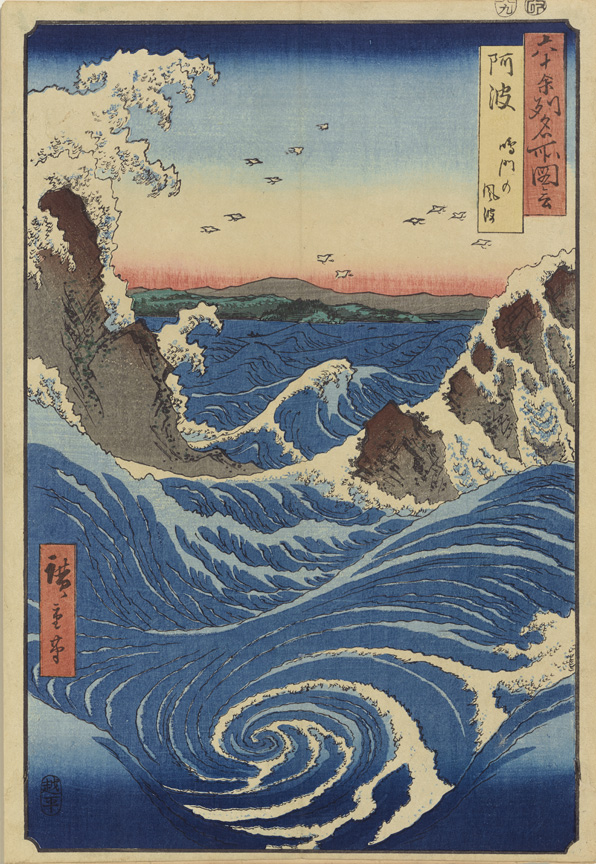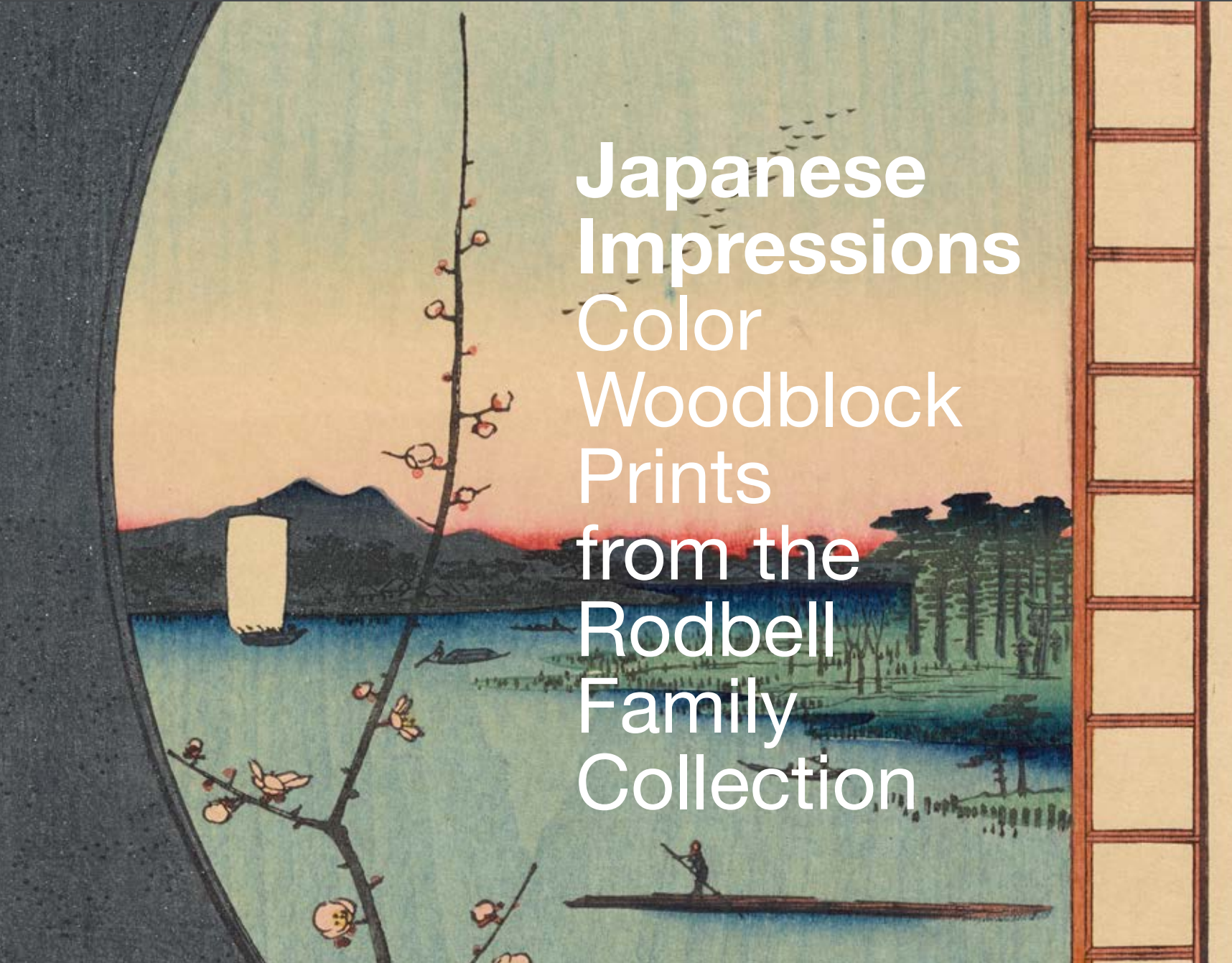
DECEMBER 10, 2016–APRIL 2, 2017
UTAGAWA HIROSHIGE
Utagawa Hiroshige (Japanese, 1797-1858)
Awa Province: Naruto Whirlpools, from Famous Places in the Sixty-Odd Provinces, 1855
Color woodblock print
Gift of the Rodbell Family Collection, 2014.16.6
Utagawa Hiroshige was perhaps the most influential artist of his generation in Japan. During the late nineteenth century, his influence also extended throughout Europe and America, where his imported prints enjoyed great popularity. Although Hiroshige began his career making images of birds, flowers, and fashionably dressed women, he developed a specialty in landscape views. Hiroshige took some liberties in depicting the landscape, as described in his decision-making process when creating a composition: “Everything lacking in taste and grace must be omitted.” While his images were based on direct observation, the artist added and deleted people and unattractive elements to construct a composition pleasing to the eye. He further argued: “To depict a beautiful view the artist must know how to combine with one another each of the elements that constitute that view.” It was the “view” itself for which Hiroshige became so renowned; he captured a particular place and mood with elegance and refinement.
The Rodbell Family Collection is particularly rich in works from two series of Hiroshige’s landscapes: Famous Places in the Sixty-Odd Provinces (1853) and One Hundred Famous Views of Edo (1857). The first series ushered in the tradition of vertical landscape compositions, featuring mountains, waterfalls, bridges, and shrines from Japan’s sixty-six provinces. One Hundred Famous Views of Edo similarly captured celebrated gardens, temples, and sites in Edo (modern-day Tokyo). This famed series became an inspiration for generations of Western artists, among them Vincent van Gogh and James McNeill Whistler, who admired Hiroshige’s bold use of color, perspective, and cropping.


